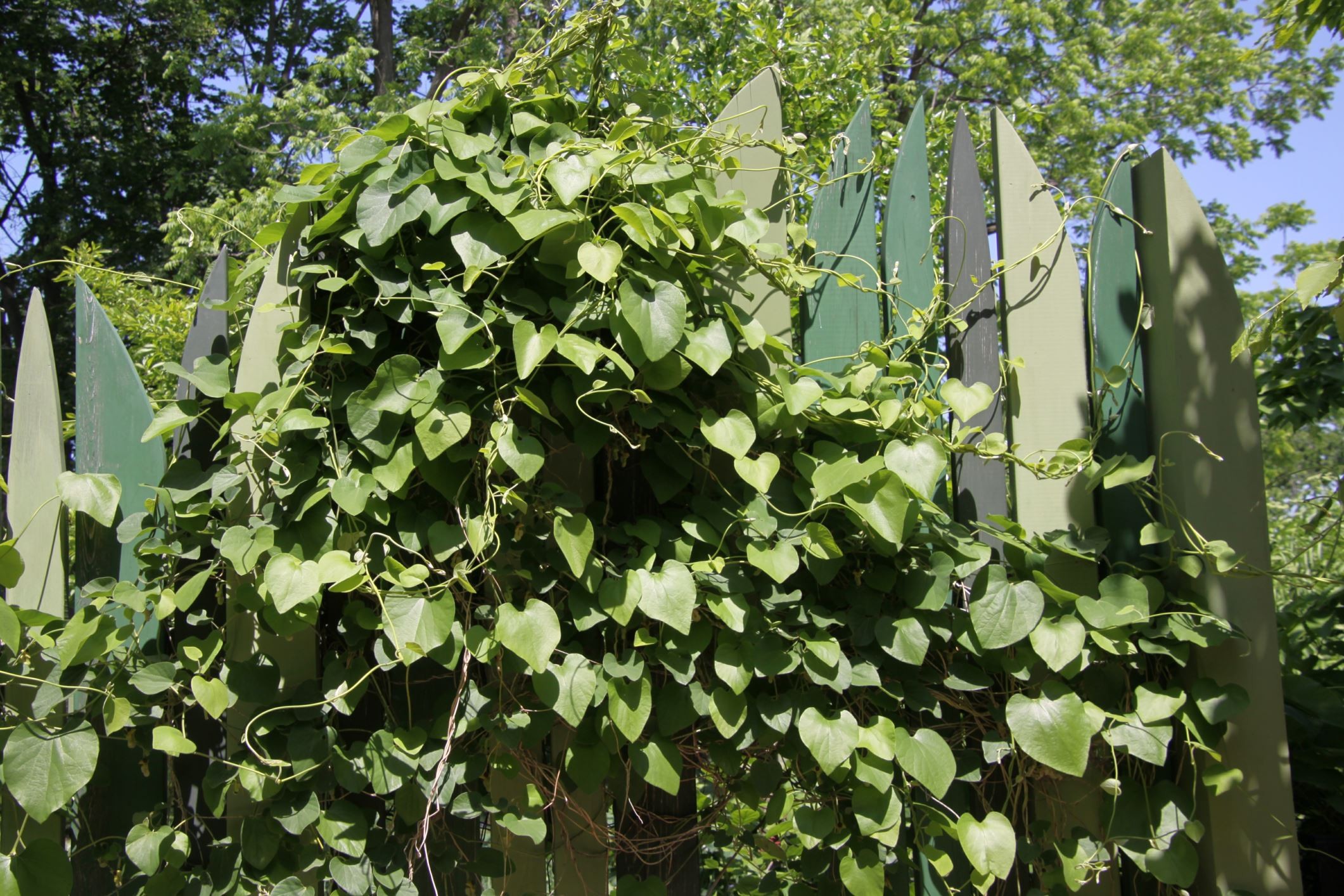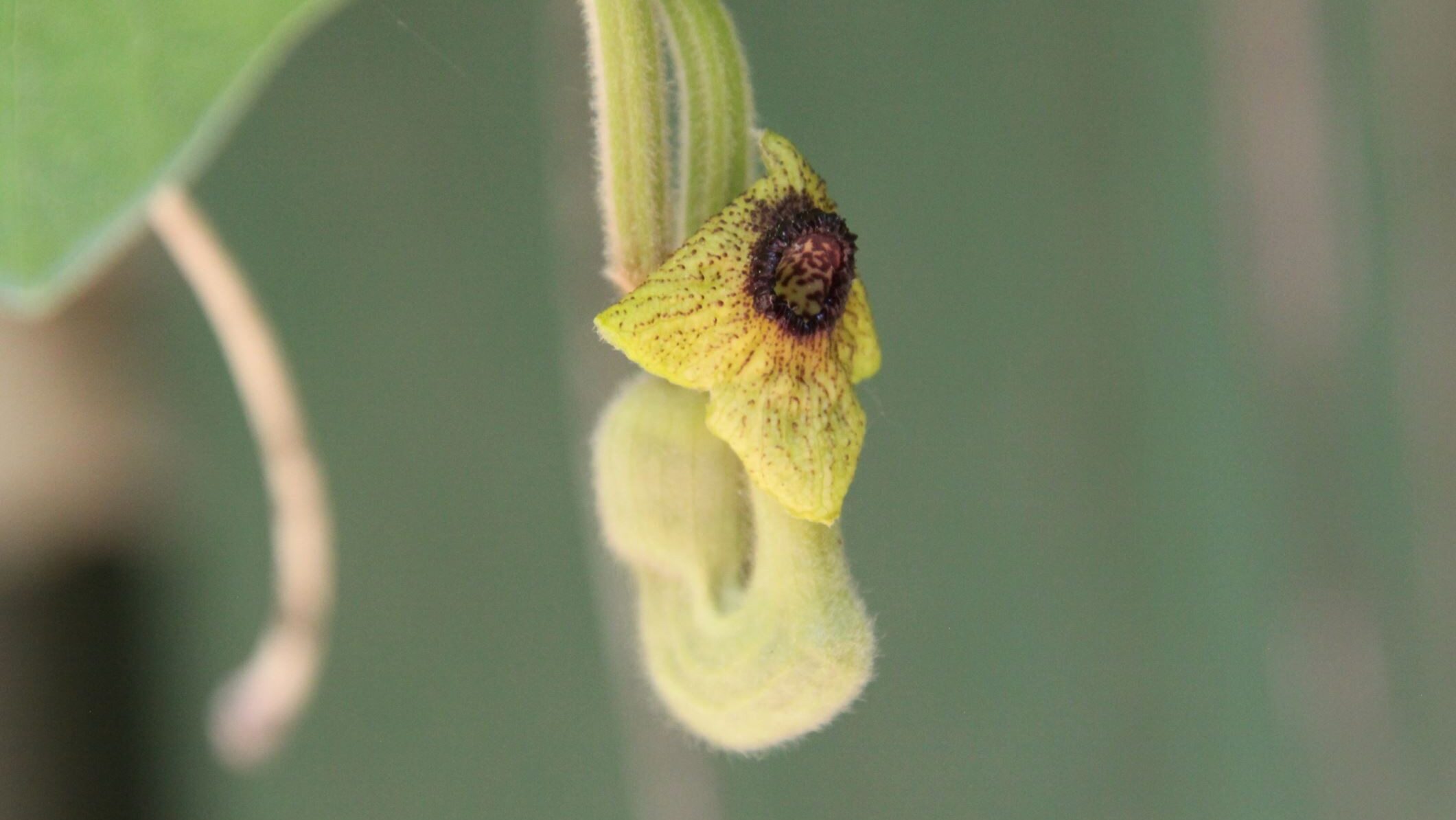
Dutchman’s Pipe vine (Aristolochia macrophylla) is a deciduous, woody, climbing vine native to eastern North America. It is beloved for its soft, heart-shaped leaves and interesting yellow-green and maroon flowers, which appear in May and June and are shaped like the old-fashioned meerschaum pipes that give the plant its name. The blooms emit a distinct, carrion-like scent, attracting flies which are the plant’s primary pollinators.
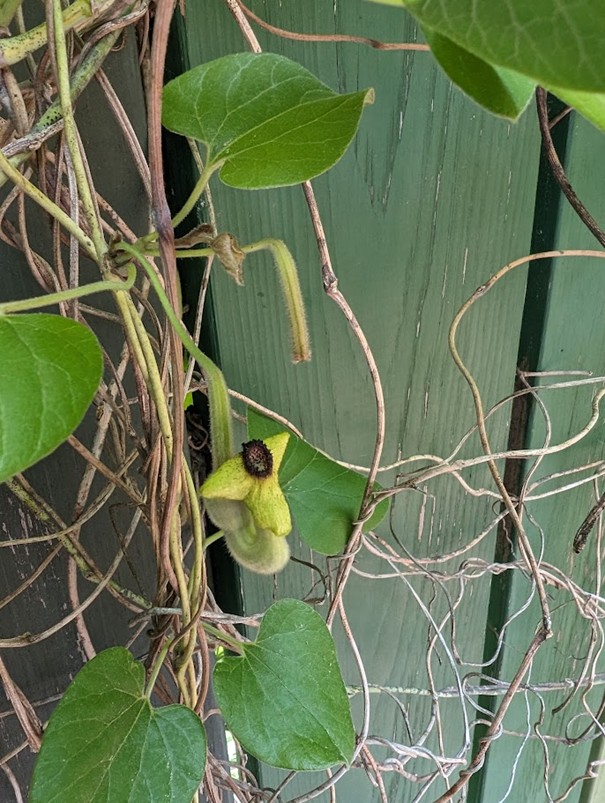
If you look carefully at the leaves of the pipe vine planted at the back of the children’s garden, you might spot some Pipevine Swallowtail (Battus philenor) caterpillars munching on the leaves. Sporting the color of extra dark chocolate with surprising pops of orange and wavy, spiny-looking filaments, the caterpillars present a punk rock appearance at odds with the graceful black and iridescent blue butterflies they will soon become. Luckily, the caterpillars can devour the foliage to their heart’s content with no lasting harm as the defoliated vine will recover!
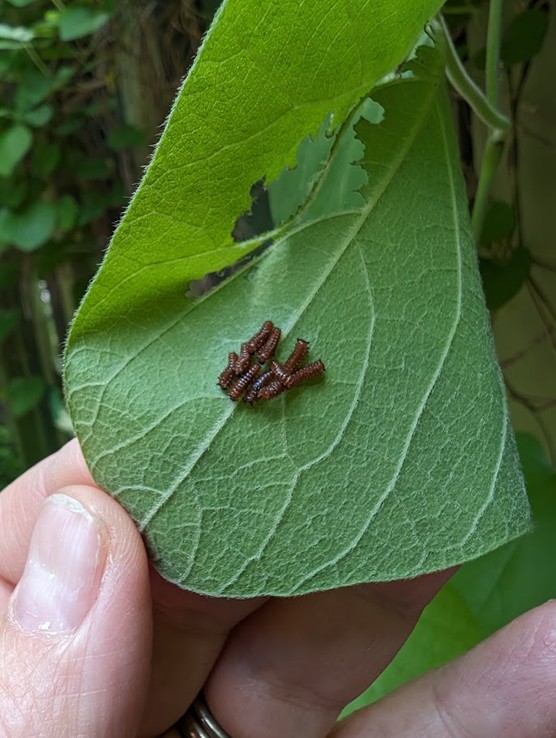
Like many caterpillars, Pipevine Swallowtails are picky, eating only plants in the Aristolochiaceae, or birthwort, family. Plants in this family contain a toxic compound called aristolochic acid, which the caterpillars accumulate as they feed. High levels of aristolochic acid in the caterpillars and adult butterflies are thought to defend them against predators. The bright orange spots on the caterpillars and on the wings of the butterflies may be a way of warning potential predators: “Don’t eat me, you’ll be sorry!”
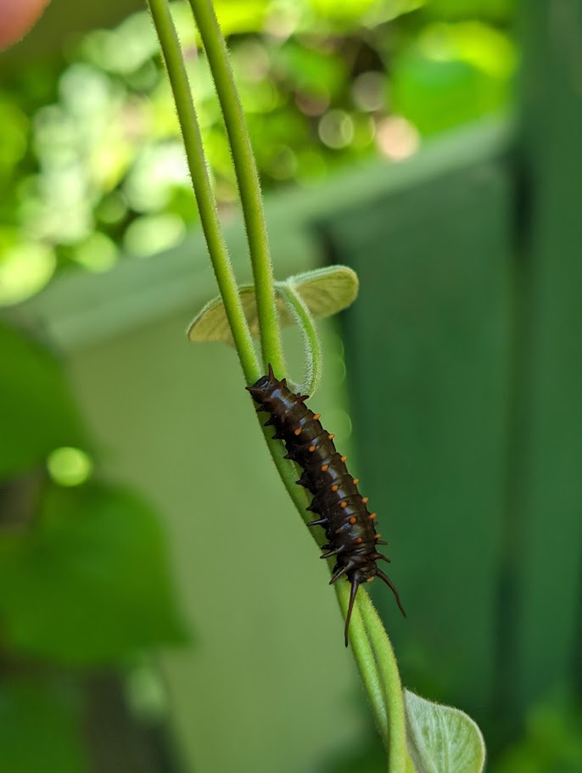
It takes just three to four weeks for the caterpillar to go from egg to chrysalis, so don’t miss this opportunity to spot the larvae before they start their process of transformation. If you don’t catch the caterpillar stage, keep an eye out for adult butterflies fluttering around the pipe vine, looking for a leaf on which to lay their eggs. It is possible that another brood of caterpillars will grow to adulthood by the end of the summer season. In fall, the year’s final generation of caterpillars overwinter in their chrysalises, emerging in the spring ready to start the cycle all over again. Once they emerge, adult Pipevine Swallowtails will feed on floral nectar, primarily from clustered and flat-topped blooms for easier access. Some of their favorite plants to visit can also be found in the Arboretum and include Vernonia spp. (ironweed), Asclepias spp. (milkweed), Syringa spp. (lilac), Phlox spp. (phlox), Lantana spp. (lantana), Verbena spp. (vervain), and Lupinus spp. (lupine).
Dutchman’s pipe vine is planted at the rear of the Children’s Garden near the Spicebush Caterpillar sculpture, and on the walls that separate the Oasis and Rose and Fragrance gardens. You can find their exact locations out in the gardens by utilizing the Arboretum Explorer Tool!
